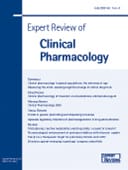
“Cannabis sativa L. has been cultivated in China for millennia for use as a fiber, food, and medicine. Cannabis sativa L. (Cannabaceae) has a long history of utilization as a fiber and seed crop in China, and its achenes (“seeds”) as well as other plant parts have been recorded in Chinese medical texts for nearly 2000 years.
While the primary applications of cannabis in Chinese medicine center around the use of the achenes, ancient indications for the female inflorescence, and other plant parts include conditions such as pain and mental illness that are the subject of current research into cannabinoids such as cannabidiol (CBD) and Δ9-tetrahydrocannabinol (THC).
In this article, prominent historical applications of cannabis in Chinese medicine are chronologically reviewed, and indications found in ancient Chinese literature that may relate to cannabinoids such as CBD and Δ9-THC are investigated.
In recent years, cannabinoids such as CBD and Δ9-THC have attracted increased attention in the context of modern pharmacology and popular Western culture, yet little research has been done to explore the historical applications of cannabis in Chinese medicine. Given China’s long history of hemp cultivation and its rich body of un-translated medical literature, it is surprising that little academic attention has focused on exploring the ways in which cannabis was used in Chinese medicine. The importance of cannabis as a fiber and food crop in ancient China, combined with the extensive use of the achenes in medicine, makes the Chinese historical record particularly valuable.
Bencao literature opens a window into the history and culture of ancient Chinese medicine. As all parts of the cannabis plant were recorded in bencao texts, the Chinese medical literature can help to clarify many details about the historical applications of cannabis in Chinese medicine, as well as providing clues into the historical prevalence of different biotypes as ancient Chinese farmers gradually selected superior varieties for fiber and seed crops.
The significant differences in how cannabis has been employed in Chinese vs. Western medicine likely relate to differences between drug and fiber biotypes as well as cultural factors, but thus far minimal research has focused on exploring this issue. Similarly, minimal attention has been given to the topic of CBD in Chinese medical history, as even fiber-rich biotypes of cannabis that were not associated with drug use may have had potential therapeutic applications related to CBD. While this modest review can only scratch the surface of the Chinese medical literature of cannabis and the questions it raises, it is hoped that further research will help to further elucidate these questions using a multidisciplinary approach.”
http://journal.frontiersin.org/article/10.3389/fphar.2017.00108/full





.jpeg)


